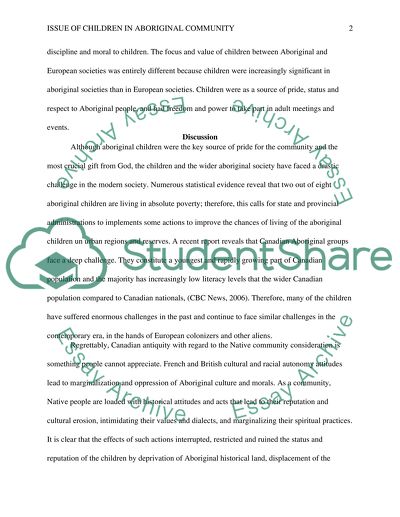Cite this document
(The Drastic and Horrifying Conditions Faced by Aboriginal Children Essay Example | Topics and Well Written Essays - 1750 words, n.d.)
The Drastic and Horrifying Conditions Faced by Aboriginal Children Essay Example | Topics and Well Written Essays - 1750 words. https://studentshare.org/environmental-studies/1464912-the-drastic-and-horrifying-conditions-faced-by-aboriginal-children
The Drastic and Horrifying Conditions Faced by Aboriginal Children Essay Example | Topics and Well Written Essays - 1750 words. https://studentshare.org/environmental-studies/1464912-the-drastic-and-horrifying-conditions-faced-by-aboriginal-children
(The Drastic and Horrifying Conditions Faced by Aboriginal Children Essay Example | Topics and Well Written Essays - 1750 Words)
The Drastic and Horrifying Conditions Faced by Aboriginal Children Essay Example | Topics and Well Written Essays - 1750 Words. https://studentshare.org/environmental-studies/1464912-the-drastic-and-horrifying-conditions-faced-by-aboriginal-children.
The Drastic and Horrifying Conditions Faced by Aboriginal Children Essay Example | Topics and Well Written Essays - 1750 Words. https://studentshare.org/environmental-studies/1464912-the-drastic-and-horrifying-conditions-faced-by-aboriginal-children.
“The Drastic and Horrifying Conditions Faced by Aboriginal Children Essay Example | Topics and Well Written Essays - 1750 Words”. https://studentshare.org/environmental-studies/1464912-the-drastic-and-horrifying-conditions-faced-by-aboriginal-children.


